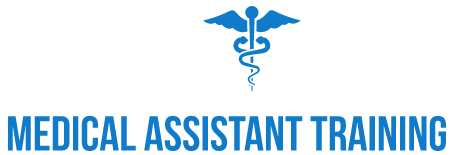Medical Assistant Income: Unlocking the Financial Potential in Your Healthcare Career
 Healthcare careers continue to offer stability and growth in today’s ever-changing job market. Among these opportunities, the medical assistant profession stands out as an accessible entry point with promising financial rewards. For aspiring healthcare professionals looking to establish themselves without extensive education requirements, understanding medical assistant income potential becomes crucial for career planning.
Healthcare careers continue to offer stability and growth in today’s ever-changing job market. Among these opportunities, the medical assistant profession stands out as an accessible entry point with promising financial rewards. For aspiring healthcare professionals looking to establish themselves without extensive education requirements, understanding medical assistant income potential becomes crucial for career planning.The journey to becoming a medical assistant combines practical skills with patient care, creating a foundation that can lead to both immediate employment and long-term career advancement. Whether you’re considering this path for the first time or looking to advance your existing healthcare career, the financial aspects deserve careful consideration.
In this comprehensive guide, we’ll explore the realities of medical assistant income across different settings, regions, and experience levels. We’ll uncover the factors that can significantly impact your earning potential and provide actionable insights to maximize your compensation in this rewarding field.
The Current Landscape of Medical Assistant Earnings
The healthcare industry’s continued expansion has created steady demand for qualified medical assistants, reflected in both employment opportunities and compensation. According to the latest data from the Bureau of Labor Statistics (BLS), medical assistants earned a median annual salary of $44,200 in 2024, translating to approximately $21.25 per hour.
This figure represents the midpoint of the salary range, with significant variation based on several factors. The income spectrum for medical assistants spans from $33,500 at the 10th percentile to $56,480 at the 90th percentile, demonstrating considerable room for growth and advancement within the profession.
What makes these figures particularly encouraging is the projected job growth. The BLS forecasts a 15% increase in medical assistant positions between 2023 and 2033—significantly faster than the average for all occupations. This translates to approximately 119,800 openings annually, creating a favorable environment for both new entrants and those seeking advancement.
Regional Variations in Medical Assistant Compensation
One of the most significant factors affecting medical assistant income is geographic location. Salaries can vary dramatically from one state or city to another, influenced by local cost of living, healthcare demand, and regional economic conditions.
States with higher costs of living typically offer correspondingly higher compensation. For instance, medical assistants working in metropolitan areas often earn more than their counterparts in rural settings, though this difference must be weighed against the increased living expenses in urban centers.
Interestingly, some rural facilities offer additional incentives such as loan repayment programs or relocation assistance to attract qualified medical assistants, potentially offsetting the lower base salary. These benefits, while not reflected in raw income figures, can significantly impact overall financial well-being.
Education and Certification: Investing in Higher Earnings
The path to becoming a medical assistant offers multiple entry points, but education and certification increasingly influence income potential. While some medical assistants enter the field with a high school diploma and learn through on-the-job training, those with formal education typically command higher starting salaries.
Postsecondary education, such as completing a certificate program or earning an associate degree in medical assisting, often translates to immediate financial benefits. These programs, typically lasting from several months to two years, provide comprehensive training in both clinical and administrative skills essential to the role.
Certification represents another significant factor in income determination. Certified Medical Assistants (CMAs) and Registered Medical Assistants (RMAs) frequently earn more than their non-certified colleagues. The investment in certification not only increases immediate earning potential but also enhances long-term career prospects and mobility.
Experience and Specialization: Pathways to Premium Pay
As with most professions, experience significantly impacts earning potential for medical assistants. Entry-level positions typically start at the lower end of the pay scale, with substantial increases occurring as professionals gain experience and demonstrate competence.
Beyond general experience, specialization offers another avenue for increasing income. Medical assistants who develop expertise in high-demand areas such as cardiology, dermatology, or orthopedics often command premium salaries. These specialized roles frequently require additional training or certification but can lead to significantly higher compensation.
The combination of experience and specialization creates a powerful formula for maximizing income potential. Medical assistants who strategically develop expertise in growing specialties position themselves for the highest-paying opportunities in the field.
Workplace Settings and Their Impact on Income
The type of healthcare facility employing a medical assistant significantly influences compensation. Larger organizations such as hospitals and multi-specialty clinics typically offer higher salaries than smaller private practices, though this varies by region and specialty.
Hospital-based medical assistants often benefit from more structured advancement opportunities and comprehensive benefits packages, which can include health insurance, retirement plans, and educational assistance. While these benefits may not appear in base salary figures, they substantially enhance overall compensation.
Specialized outpatient facilities, particularly those in high-demand fields like dermatology or plastic surgery, frequently offer premium compensation to attract and retain qualified medical assistants. These settings may also provide performance-based incentives or bonuses tied to patient satisfaction or clinic productivity.
Career Advancement: Beyond Entry-Level Income
One of the most appealing aspects of the medical assistant profession is its potential as a stepping stone to advanced healthcare careers. Many medical assistants use their experience as a foundation for further education and career growth, leading to significantly higher income potential.
Common advancement paths include:
- Specialized medical assisting roles with increased responsibilities and compensation
- Supervisory positions overseeing other medical assistants or office staff
- Further education to become nurses, physician assistants, or other advanced practitioners
Each of these paths offers substantial increases in income potential while building on the foundational skills and experience gained as a medical assistant. This career mobility represents a significant advantage for those who view medical assisting as part of a longer professional journey.
Training Programs: Investing in Your Future Income
Selecting the right educational program represents a crucial first step toward maximizing medical assistant income potential. Several reputable institutions offer programs designed to prepare students for certification and career success.
The University of California Los Angeles (UCLA) Extension department offers a health medical assistant certificate with both online and in-person components. With an impressive 86.36% graduation rate, this program provides excellent preparation for those in the Los Angeles area, with significant tuition discounts available for UCLA employees.
Purdue University Global delivers an accelerated medical assistant certificate through innovative 10-week courses, allowing students to complete the required 58 credits more quickly than traditional programs. This accelerated timeline enables graduates to enter the workforce sooner, maximizing lifetime earning potential.
For those seeking fully online options, the U.S. Career Institute offers a comprehensive medical assistant certificate program with a remarkable 91.63% graduation rate. This program prepares students for both the Certified Clinical Medical Assistant and Certified Medical Administrative Assistant exams, enhancing employment and income prospects.
Other notable programs include:
- Eagle Gate College’s nine-month online medical assistant diploma program
- Liberty University’s flexible medical office assistant certificate and associate degree options
- Dakota College at Bottineau’s medical assistant certificate and associate of applied science programs
These programs vary in duration, cost, and format, allowing prospective students to select the option that best aligns with their financial resources and career goals.
Maximizing Your Income Potential: Practical Strategies
Beyond education and certification, several practical strategies can help medical assistants maximize their earning potential:
-
Continuous skill development: Regularly updating clinical and technological skills makes you more valuable to employers and opens doors to advanced positions.
-
Professional networking: Building relationships with healthcare professionals can lead to opportunities in higher-paying settings or specialties.
-
Geographic flexibility: Willingness to relocate to high-demand areas can significantly increase income potential, particularly when cost of living differences are considered.
-
Negotiation skills: Understanding market rates and articulating your value can lead to better compensation packages, particularly when changing positions or employers.
-
Performance excellence: Consistently demonstrating exceptional patient care and operational efficiency can lead to merit-based increases and advancement opportunities.
These strategies, when combined with appropriate education and certification, create a powerful formula for maximizing income throughout your medical assistant career.
The Future Outlook: Income Trends and Opportunities
The outlook for medical assistant income remains positive, driven by several factors influencing healthcare delivery. The aging population, increased emphasis on preventive care, and ongoing healthcare provider shortages all contribute to strong demand for qualified medical assistants.
Technological advancements in healthcare also create opportunities for medical assistants with specialized skills. Those proficient in electronic health records systems, telehealth support, and digital patient communication tools often command premium salaries in forward-thinking healthcare organizations.
Policy changes affecting healthcare delivery and reimbursement may also influence medical assistant compensation. As healthcare systems increasingly focus on efficiency and patient outcomes, the role of well-trained medical assistants in achieving these goals may lead to enhanced compensation structures.
Building Your Path to Financial Success
The medical assistant profession offers accessible entry into healthcare with promising income potential and numerous pathways for advancement. By understanding the factors that influence compensation and strategically investing in education, certification, and skill development, you can maximize your earning potential in this growing field.
Whether you’re seeking immediate employment or viewing medical assisting as a stepping stone to advanced healthcare roles, the financial rewards can be substantial. The combination of strong job growth, multiple advancement pathways, and relatively brief training requirements makes medical assisting an attractive option for those interested in healthcare careers.
As you consider your options, remember that income potential extends beyond base salary to include benefits, advancement opportunities, and work-life balance. By taking a holistic view of compensation and career development, you can make informed decisions that maximize both financial rewards and professional satisfaction in your medical assistant career.
Ready to take the next step? Explore accredited training programs, connect with practicing medical assistants, and consider how this rewarding career might align with your personal and financial goals. The path to success as a medical assistant begins with informed decision-making and strategic planning for your professional future.
